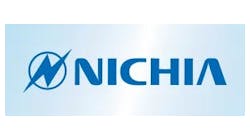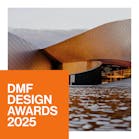Mulvey & Banani Lighting (MBL) Expands Internationally, Wins Prestigious Awards for Environmental Lighting Design That Transforms Modern Urban Experience
The global architectural and design community is waking up to the role of lighting design as a principal partner in the design process. For a building, interior, or public space to be successful, it must use light in a way that integrates not only with architectural design themes, but also considers wellness standards, the environment, and imparts a powerful end user experience. As a leader in shaping the perception and experience of buildings and places through the use of lighting design, Toronto-based Mulvey & Banani Lighting (MBL) is pleased to announce that it has been recognized by both the IESNA (Illuminating Engineering Society of North America) and Darc Awards for recent installations, including: Toronto’s Prince Edward Viaduct, Google corporate offices, consulting firm Deloitte’s headquarters, Menkes’ One York commercial tower, as well as world-renown landmark Niagara Falls.
“Lighting has the power to trigger powerful emotions, add theatrical animations, and encourage movement and interaction, yet is often missing from the overall design conversation,” said Paul Boken, vice president of Mulvey & Banani Lighting. “As the discipline of lighting design matures and technology evolves, we believe that more and more architects and designers will be looking to lighting as part of their fundamental design tool kit. We are thrilled to receive this type of recognition and to continue to champion the importance of lighting design in the overall user experience of built environments.”
MBL, along with artist and architecture professor Dereck Revington, recently transformed Toronto’s Prince Edward Viaduct from infrastructure into an interactive work of art. Designed to express changes in weather through the seasons in real time, the 450m viaduct’s strings are now illuminated from dusk until dawn on a recurring cycle, changing in both hue and intensity in response to surrounding wind speeds and temperature.
For Google’s Canadian office, located in the technology hub of Waterloo, four key lighting themes were designed into the workspace: work, rest, food, and fun. From meeting pods to a literal ‘fireside chat’ area (complete with a working fireplace), MBL incorporated unique installations into each area, reflecting the overall theme of ‘planned randomness.’
Boasting a 52–foot, all glass atrium (making it one of Toronto’s tallest lobbies), commercial development One York’s lighting design was created to help architectural details soar. The all LED design is environmentally friendly and encourages visitors to look up and take in unique architectural design details, all while invoking a feeling of serene calm amongst the backdrop of a busy downtown district.
Acting as a hub for both local and international employees, Deloitte’s Toronto headquarters was designed with an ‘open desk’ policy. With numerous workspaces, lounges and collaboration hubs spread amongst six storeys, the floating staircase in the middle of the space had to act as an anchor – and encourage movement and interaction. MBL achieved this by placing luminaries within each step, illuminating the way through multi-levels with an eye-catching zigzagging pattern.
MBL’s collaborative installation at Niagara Falls enables the rushing water of both the Canadian ‘Horseshoe’ falls and American ‘Bridal Veil’ falls to be illuminated in millions of different colours and patterns. From a Canadian or American flag, to the blazing orange of a summer sunset, patterns and colour combinations can be programmed to change at the flick of a switch. The lights can also synchronize with local and national events, enabling the public to interact with what is projected onto the falls for the first time.
In addition to its award-winning projects, MBL's portfolio has a growing international imprint. The company is serving up lighting drama for office and hotel towers, along with theme parks, in North America as well as the Middle East, Asia, and Europe. Despite the location of the project, MBL always seeks to use light in strategic ways that transform places and spaces into functioning, architectural works of urban art.
About MBL
Originally a specialty division, MBL was recently formed as a subsidiary of renowned Canadian electrical and building systems engineering firm Mulvey & Banani International (MBII). Since then, the company has been rapidly expanding into new markets including China, Qatar and Dubai and is actively changing how the global architectural and design community perceives how lighting can be integrated into built spaces.
The company’s roster of accomplished designers offer capabilities that are both highly creative and technical. Associate Stephen Kaye, B.A., MFA LD, IESNA, was recently recognized with a prestigious Top 40 under 40 lighting designer designation. Staffers boast diverse backgrounds and viewpoints, with experience ranging from interior design, arts and architecture, live production, and control technologies. Operating under the same roof, the two companies collaborate seamlessly with their respective specialties on large complex projects.
For more information on MBL visit mblightingdesign.com or follow the company on Twitter and Instagram @mblightdesign.
###




